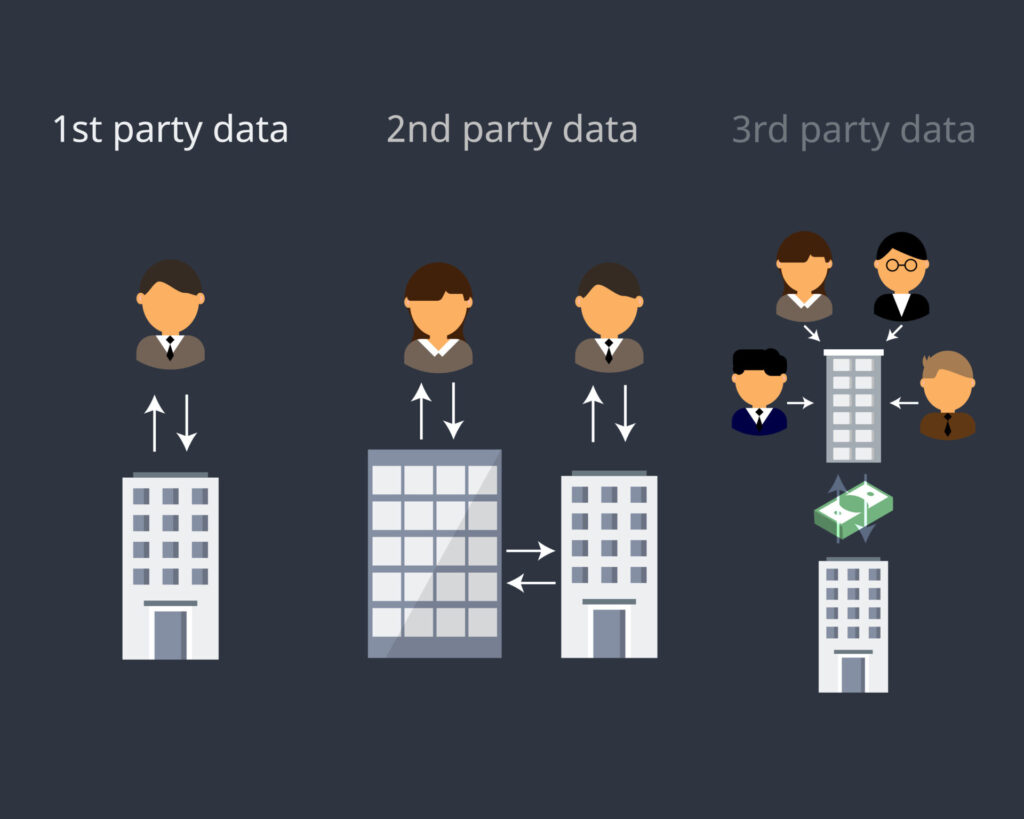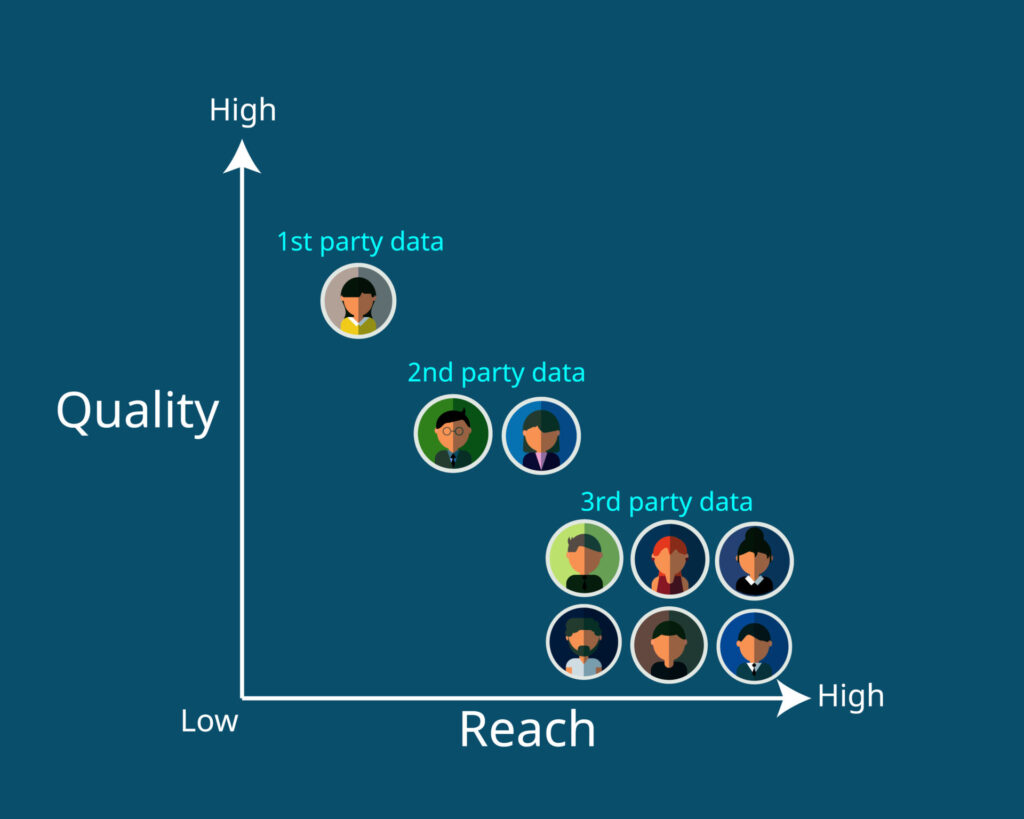The deprecation of third-party cookies is not all bad news for marketers. They can employ a number of alternative techniques like using first-party and second-party data, placing contextual ads, and hyper-targeting using IP addresses.
When Google Chrome will be the last major browser to eliminate third party cookies
In 2019, when Google announced that it would be blocking third-party cookies by 2022, it came as an initial shock for many marketers because many were still relying on this as a data point to send targeted messages to their customers. This move by Google was a big blow because as of 2021, 51% of marketers relied on third-party cookies as a key data source, and 84% of marketers were seriously worried about the change.
Fast forward to today, and Google still hasn’t eliminated this feature completely. The current timeline is said to be 2023. But, Google is probably the only browser still collecting third-party cookie data. Apple Safari and Mozilla Firefox eliminated this feature from their browsers long ago (in fact, this was in 2013). This brings us to the question; how important are third-party cookies really?
The origin of cookies and their eventual decline in popularity
When cookies were first introduced, they were meant to collect data on user behavior and preferences on a website or across a series of websites on the Internet. This data helped provide them with an optimal user experience. But, over time, the data collected for this purpose became a point of contention for users because it fell into the hands of marketers who used it for digital marketing, or really anyone who was willing to pay to access all this data.
GDPR fans the flames of stricter privacy laws
Especially after GDPR came into force in 2016, users became all the more aware of their data privacy rights and protested against the unconsented use of such data. Safari and Firefox eliminated third-party cookies way ahead of time. But when Chrome, which is still used by 3.2 billion users worldwide, announced its plans to remove this technology from its browser, it became a turning point for marketers. In fact, Google lay wedged between users demanding data protection and advertisers demanding ROI from their ad revenues on the platform. If you think about it, justice lies on the side of the users.
Google’s plans to target with cohorts
That being said, to make up for the third-party cookies deprecation, Google is working parallelly to build a privacy sandbox that can help advertisers categorise their audience into cohorts, rather than targeting individualised, personalised ads. But, are there ways in which marketers can create effective, targeted ads without relying on third-party cookies? Of course.
First and second-party cookies are as effective and more relevant
What are first party cookies?
First-party cookies are data points that marketers collect directly from their customers. For example, brands typically have a tracking pixel placed on their website. So, when a customer visits their site, brands can track which products they viewed, which page they spent the most time on, and which products they have added to their cart. Based on this, they can send targeted push notifications or email nudges to these customers.
How first party cookies can improve the performance of marketing campaigns?
There are other ways brands collect first-party cookies too; from their CRM data, collecting direct feedback, interacting with customers through email, and so on. First-party cookies are the direct, most valid feedback they can get on what their customers are looking for from their brand. The disadvantage is that it’s a small data set, which includes only their customers and direct prospects, something that may not be enough to design campaigns at scale.

What are second party cookies?
Second-party cookies are data that marketers collect from brands or companies that target the same customers that the marketers do. For example, let’s say a marketer wants to collect data about sports enthusiasts. They can approach a brand that collects data on this cohort, pay them, and gain access to this data. They can then use this data to create better ad campaigns. The advantage of second-party cookies is that it gives a wider perspective for marketers on what customers in specific cohorts want, or are looking for.

One of Merit’s marketing data expert says, “While it is difficult to match the scale of data one can get from third-party cookies, it is possible to run highly targeted campaigns that perform better in terms of ROI with only first and second-party cookies. In fact, while these campaigns may not have the same reach in terms of the overall audience, conversion numbers are way better when first-party and second-party data are used. The explanation for this is fairly simple: We know the user is at least partially interested in your brand. Leverage that first.”
Contextual advertising is still a win-win
If you’ve segmented your audience into cohorts, like gaming enthusiasts, art enthusiasts and such, you can place contextual ads in a gaming website or an art website to target these users and also plan the creatives as per the segmented audience.
IP-based identification & targeting
IP-based ad targeting is one of the most hyper-focused ways in which you can reach out to your customer. If you’re able to track their IP-address, you can create ads that put you directly in their line of sight. For example, let’s say you run a tech company and offer a bunch of SaaS services like CRM, helpdesk, and so on. If a customer/ potential customer has visited your helpdesk site and explored the content on that page, you can use their IP address to find out which company they belong to (in the case of B2B marketing campaigns) and pitch to them directly.
In conclusion, the deprecation of third-party cookies is not all bad news for marketers. At the core of employing these alternatives we’ve talked about in this blog, is to recognise the underlying principle – that it is important to let your customer know how you are using their data to deliver personalised experiences for them. That transparency, in itself, can earn you brand loyalty and trust.
Merit Group’s expertise in Marketing Data
At Merit Group, we partner with some of the world’s leading B2B companies. Our data teams work closely with our clients to build comprehensive B2B marketing contact lists that provide a direct line to their target audience.
If you’d like to learn more about our service offerings or speak to a marketing data consultant, please contact us here: https://www.meritdata-tech.com/contact-us
Related Case Studies
-
01 /
Enhanced Audience Data Accuracy for a High Marketing Campaign RoI
An international market leader in exhibitions within the learning, healthcare, technology and veterinary sectors.
-
02 /
Sales and Marketing Data Analysis and Build for Increased Market Share
A leading provider of insights, business intelligence, and worldwide B2B events organiser wanted to understand their market share/penetration in the global market for six of their core target industry sectors. This challenge was apparent due to the client not having relevant tech tools or the resources to source and analyse data.
